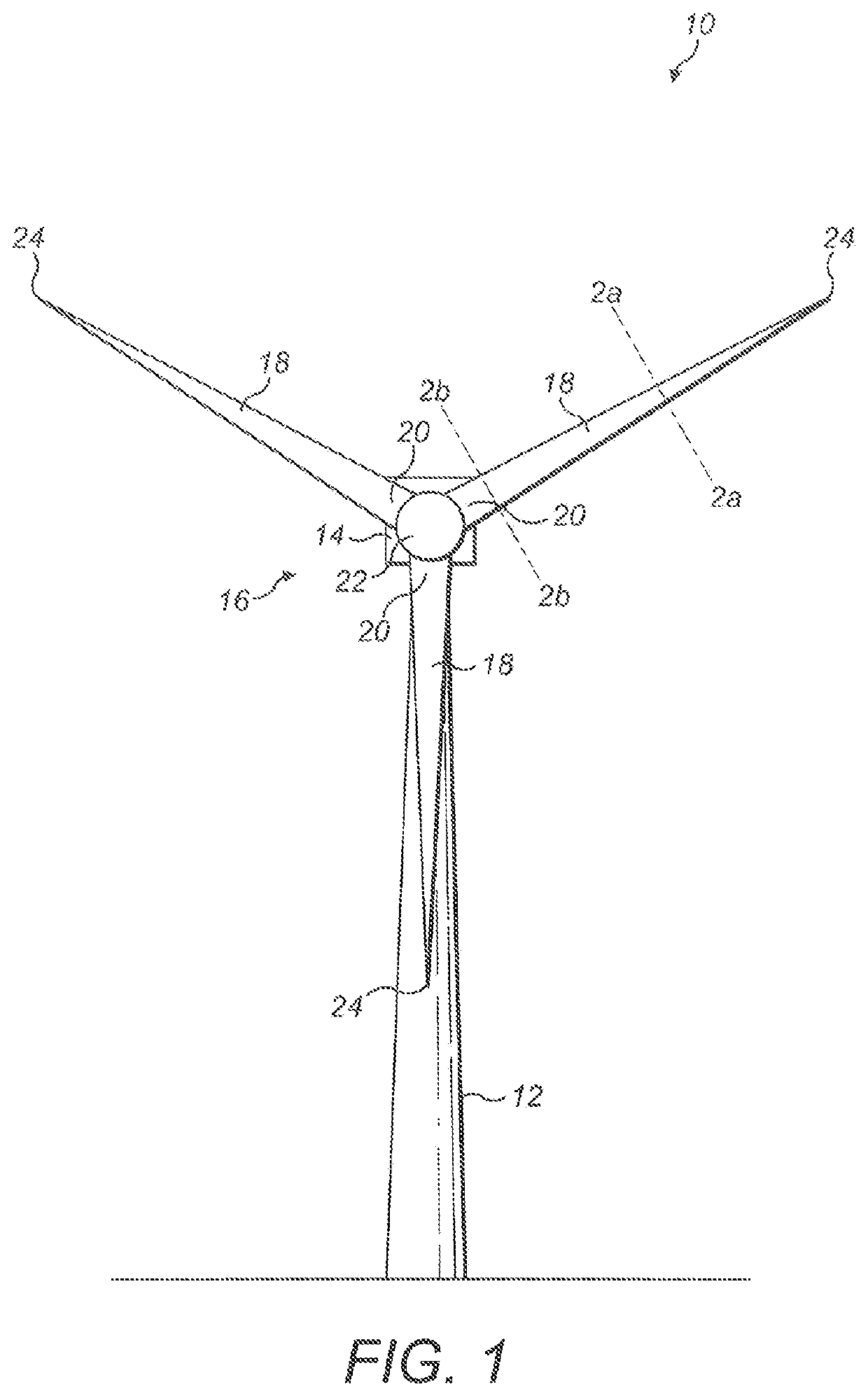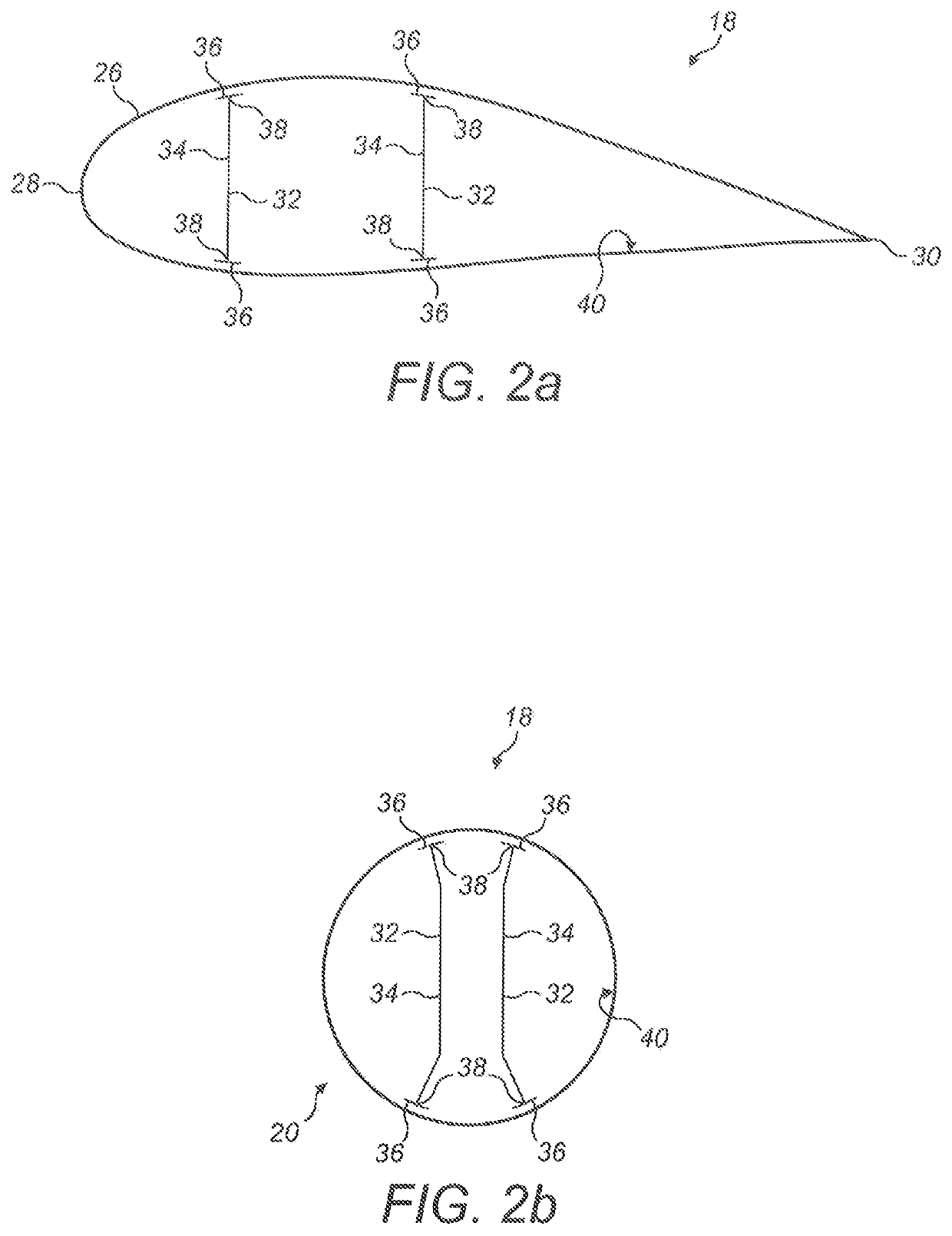Manufacture of a wind turbine blade
a wind turbine and blade technology, applied in the field of wind turbine blade manufacturing, can solve the problems of insufficient adhesive in the bondline between the blade shell and the mounting flange of the shear web, difficult to detect using non-destructive testing methods, and difficulty in controlling the compression of adhesive, so as to minimize the number of steps in the manufacturing process of the flange. , the effect of constant cross-section
- Summary
- Abstract
- Description
- Claims
- Application Information
AI Technical Summary
Benefits of technology
Problems solved by technology
Method used
Image
Examples
Embodiment Construction
[0035]Referring initially to FIG. 1, a wind turbine 10 according to an embodiment of the present invention is shown schematically. The wind turbine 10 comprises a tower 12 supporting a nacelle 14 to which a rotor 16 is mounted. The rotor 16 comprises a plurality of wind turbine blades 18 that extend radially from a root end 20, attached to a central hub 22, to a tip end 24. In this example, the rotor comprises three blades 18.
[0036]FIG. 2a shows a schematic cross-sectional view of an airfoil portion of a wind turbine blade 18 taken along the line 2a-2a in FIG. 1. The blade 18 may comprise a hollow shell 26 made up of two half-shells bonded together along the leading and trailing edges 28, 30 of the blade 18. Two shear webs 32 are located within the internal cavity of the blade 18. The shear webs 32 extend longitudinally along the length of the blade 18, transverse to the plane of the page.
[0037]In this example, each shear web 32 comprises a central web element 34 with two mounting f...
PUM
| Property | Measurement | Unit |
|---|---|---|
| depth | aaaaa | aaaaa |
| length | aaaaa | aaaaa |
| width | aaaaa | aaaaa |
Abstract
Description
Claims
Application Information
 Login to View More
Login to View More - R&D
- Intellectual Property
- Life Sciences
- Materials
- Tech Scout
- Unparalleled Data Quality
- Higher Quality Content
- 60% Fewer Hallucinations
Browse by: Latest US Patents, China's latest patents, Technical Efficacy Thesaurus, Application Domain, Technology Topic, Popular Technical Reports.
© 2025 PatSnap. All rights reserved.Legal|Privacy policy|Modern Slavery Act Transparency Statement|Sitemap|About US| Contact US: help@patsnap.com



